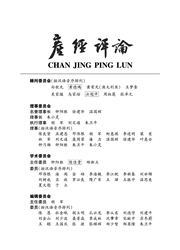

 中文摘要:
中文摘要:
基于1988—1997年和2000—2011年这两个时段环渤海、长三角和珠三角三大经济圈各省市分行业面板数据,从结构变化的资本集约度角度考察制造业结构变动的趋向。实证结果表明,1988—1997年时段,经济圈中除广东省外,绝大多数省市制造业劳动力要素是从劳动密集型产业向资本密集型产业转移的,而2000—2011年时段,不少省市的制造业结构呈劳动密集型化变动特征。而且,三大经济圈制造业结构向资本密集型调整在区域上由北向南递减,而向劳动密集型调整则由南向北递减。进一步的研究显示,三大经济圈制造业结构趋向于劳动密集型化的现象背后,存在制造业向技术密集型产业调整的明显趋势。另外,对制造业人均累积资本进行分解后发现,制造业结构变化本身并不是制造业人均累积资本变化的决定性因素;2000年以后三大经济圈制造业人均累积资本的提升差异较大,且劳动力要素在部门间的流动已开始抑制整体制造业人均累积资本的增加。
 英文摘要:
英文摘要:
In this paper, we investigated changing trends in the structure of their manufacturing by calculating the capital intensity of structural changes of the manufacturing industry on the three major economic circles. The empirical results show that workers of the manufacturing industry in most provinces moved into more capital - intensive industries from labor - intensive industries in 1988 - 1997, and manufacturing structure of many provinces was labor intensive in 2000 -2011. major economic circles' manufacturing structure was Furthermore, the capital -intensive adjustment of the three on the decrease from north to south in China, and on the contrary, the labor -intensive change of the manufacturing structure was on the decrease from the south to the north, However, further conclusion displays that the manufacturing industry existed evidently the technology - intensive development trend in 2000 -2011. In addition, the capital accumulation per capita on the overall manufacturing sector was decomposed, and we find that the structural change of manufacturing industry itself was not the decisive factors for the change of the per capita cumulative capital in the whole manufacturing industry. Then, the difference between increases in the aggregate capital stock per worker in the manufacturing sector on the three major economic circles after 2000, and the reallocation of workers among industries in many provinces has started to restrain the increasing of the aggregate capital stock per worker in the manufacturing sector.
 同期刊论文项目
同期刊论文项目
 同项目期刊论文
同项目期刊论文
 期刊信息
期刊信息
